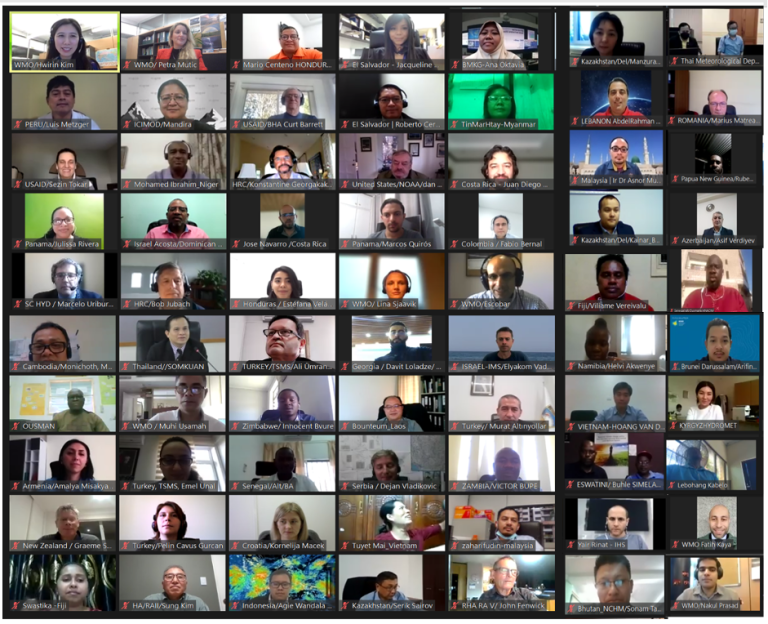Flash Flood Guidance System: Vision 2030
Flash floods cause more than 5,000 deaths worldwide annually, exceeding any other flood-related event. As the global population increases, especially in urban areas, and societies continue to encroach upon floodplains, the need for flash flood early warning systems becomes more paramount.

Flash floods cause more than 5,000 deaths worldwide annually, exceeding any other flood-related event. As the global population increases, especially in urban areas, and societies continue to encroach upon floodplains, the need for flash flood early warning systems becomes more paramount.
In response to this need, the World Meteorological Organization (WMO), the U.S. National Oceanic and Atmospheric Administration (NOAA), the United States Agency for International Development (USAID) Bureau for Humanitarian Assistance, and the Hydrologic Research Center (HRC) formed a partnership in 2007 to develop and implement an early warning flash flood forecasting system (Flash Flood Guidance System – FFGS) for global application.

As of 2021, over 3 billion people in 67 countries are being provided early warnings of potential flash flooding through their National Meteorological and Hydrological Services (NMHSs) working in concert with their National Disaster Management Agencies.
The “Flash Flood Guidance System (FFGS) with Global Coverage – Vision 2030” virtual event took place on 16 November 2021, and was attended by 140 representatives from 50 countries.
The goal was to bring together the users of the national and regional systems to show the latest achievements after the FFGS Global Workshop which has held in Turkey in 2019, share best practices on the use of flash flood guidance products, and discuss sustainability in order to ensure long-term operations and service delivery.

The latest achievements also include the development the FFGS centralized online training platform, a one-stop-shop for trainers and trainees to access free distance learning resources, including hands-on material, case studies and videos, to ensure that no one is left behind.
A Training Simulator interactive application is now being used to train operational forecasters in the effective usage of necessary data and products in order to improve flash flood forecasting skills and actionable communication with the users of flash flood warnings.
The approved FFGS Sustainability Strategy is the product of joint efforts of FFGS member countries, WMO’s Standing Committee on Hydrological Services and FFGS Partners. It sets out a vision and approach for the future development and implementation of FFGS in order to save lives and livelihoods. It was approved by the Extraordinary World Meteorological Congress after receiving endorsement from the Hydrological Assembly.
The strategy brings us new aspects and visions to ensure the sustainability of the FFGS for the benefit of current and future generations as we keep facing with the increasing frequency and severity of flash floods all over the world.
South Asia Flash Flood Guidance System Radar Hydrology Training
Activities on capacity building and improvements of early warnings of flash floods in the South Asia region are advancing with the South Asia Flash Flood Guidance System (SAsiaFFGS) Radar Hydrology Training.
In five weeks of virtual training (25 October-15 November 2021), more than 80 weather radar experts, operational meteorological and hydrological forecasters from Bangladesh, Bhutan, India, Nepal and Sri Lanka learnt about the use of weather radar data in FFGS for the estimation of precipitation. The inclusion of weather radar data into FFGS will provide better detection of weather systems and rainfall amounts that can cause flash flood events.
Representatives from Bangladesh, Bhutan, India, Nepal, Sri Lanka, Hydrologic Research Center and WMO joined the opening session.








